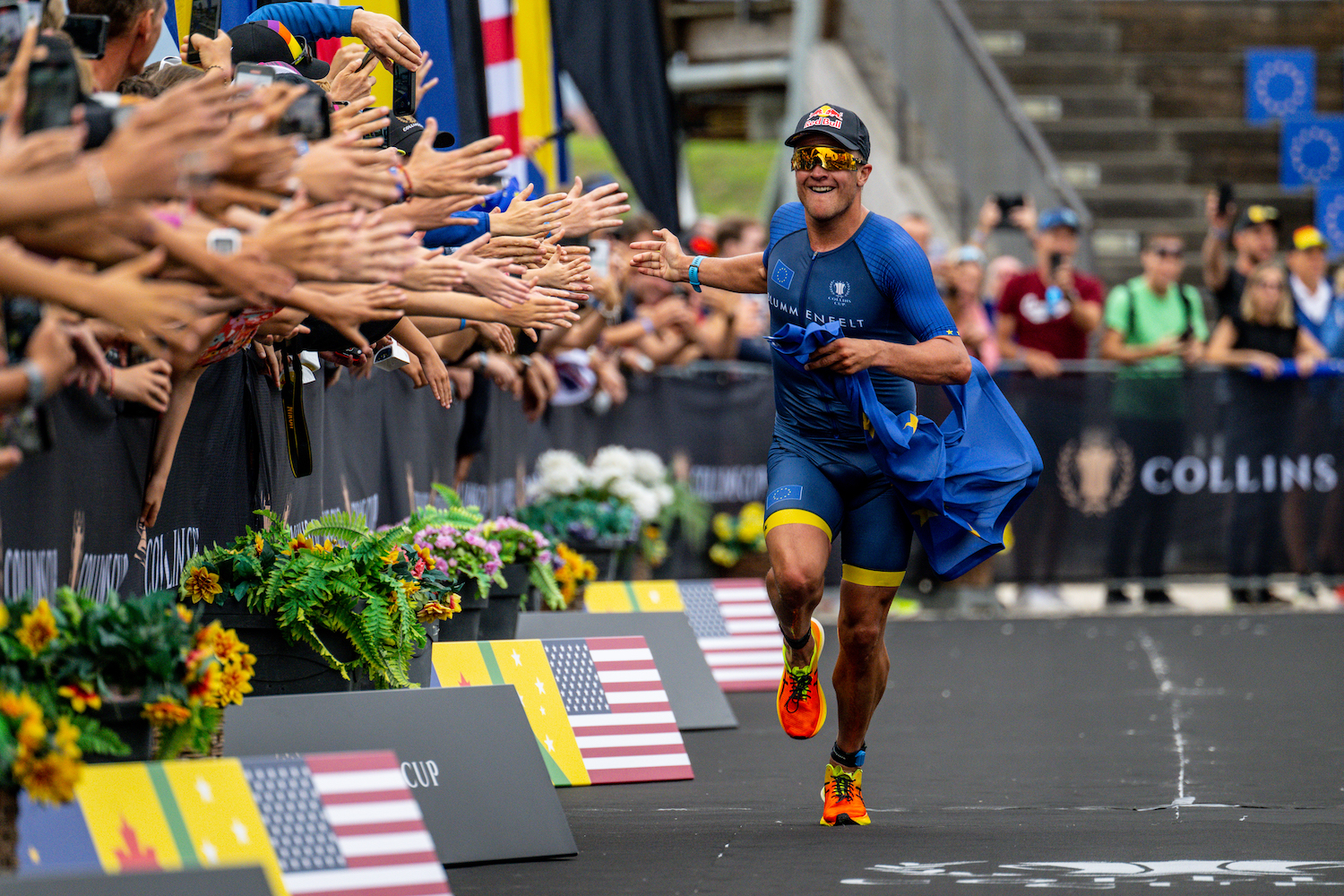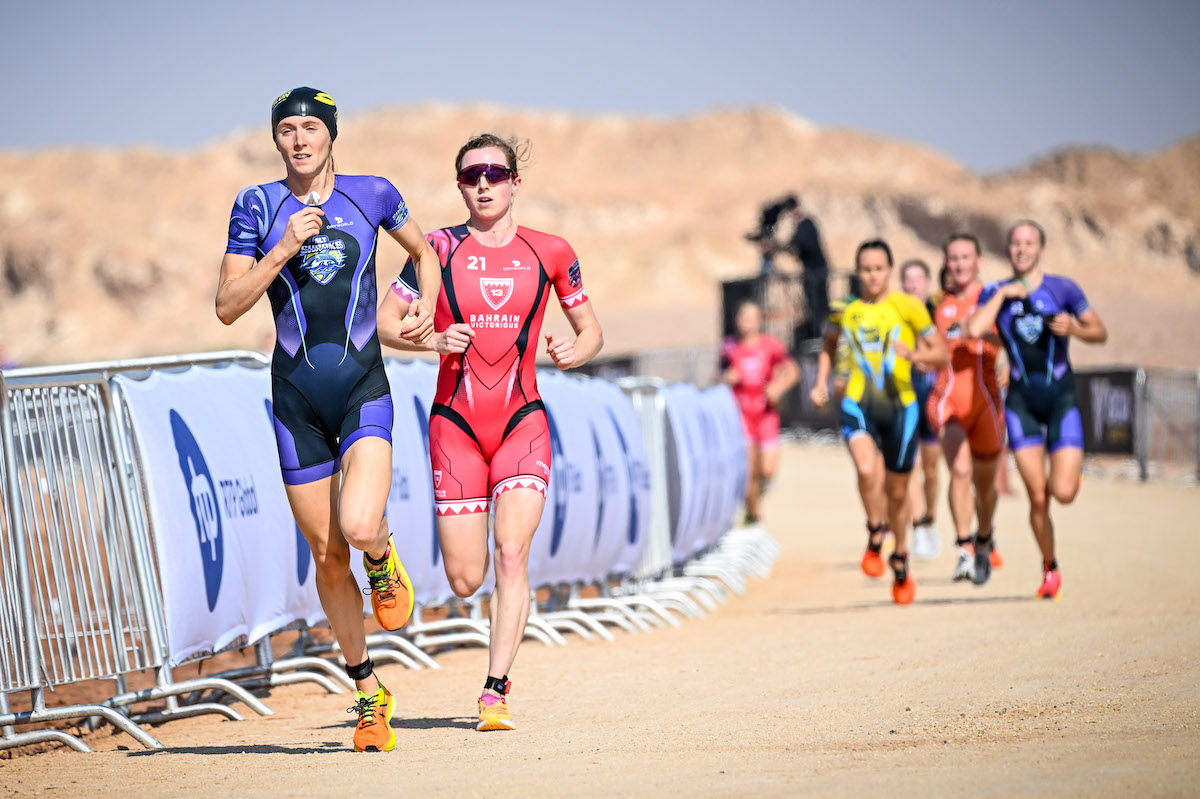What is a tri-suit?
New to triathlon and heard you need a tri-suit but not exactly sure what it is? Long-suffering triathlete and former 220 Triathlon features editor Matt Baird explains how a tri-suit works and why it's an essential kit purchase

A tri-suit is a one-piece garment specifically engineered for triathlon and its three disciplines.
It will have quick-drying features, padding at the rear and zippers to provide you with a do-it-all suit that you won’t have to change out of while swimming, cycling and running.
Alongside the bike and a triathlon wetsuit, the tri-suit is the most important multisport purchase you’ll make.
It is, after all, your trusty companion from the pre-race warm-up until you leap/ cartwheel/knee slide over the finish line and inhale that post-race burger.
It’ll save you lots of time in transition by not having to keep changing and it will most likely be packed with tech and expert know-how to keep you comfortable throughout your race.
See our list of the best tri-suits for men and women for expert reviews of several dozen options, or read on for a more in-depth answer to the question, ‘what is a tri-suit?’
A history of tri-suits
Tri-suits began life in the 1980s with early triathletes and the brand Zoot pioneering the way by stitching pads into running shorts.
The tri-suit soon developed into either ultra-tight and revealing or baggy and loose two-pieces by that decade’s end.
Their increased appeal wasn’t just about benefitting the swim, bike and run, though, as another key advantage was the amount of time saved in transition by not having to change from swim-to-bike and then bike-to-run clothing.
Speedo created the Aquablade suit in 1996, which proved both hydrodynamic and quick-drying and changed the course of tri-suit history.
A key advantage is that athletes saved plenty of time in transition; instead of changing from swim-to-bike-to-run clothing, athletes could breeze through T1 and T2.
The development of tri-suits has truly accelerated in the last half-decade.
Tri designers are now fully aware of the hydro/aerodynamic gains offered by the once-humble suit, while a tri-suit will also give flexibility on the swim; storage options on the bike; and posture support, cooling and restriction-free running on the final leg.
The tri-suit’s key components

Fit
Having a tri-suit that’s close-fitting but not restrictive is essential and it’ll help prevent drag throughout the day.
Key for us is trying before you buy to gauge the fit options, a closer examination of the chamois size and an evaluation of the grippers and pocket distribution.
Materials
Tri-suits are usually an elastane/Lycra and polyester mix. Breathability, aero and hydrodynamics, fit, comfort and UV protection are all design considerations.
Quick-drying, cold black technologies (designed to reflect heat away) and a hydrophobic coating that beads water can all be found on a variety of tri-suits at every price level.
These days, you’ll also note strange looking patterns in some areas, with things like ribbed fabrics or raised bumps proven to improve aerodynamics on the bike (see the Surpas Insane for a fine example of this).
Zipper
Suits offer front and back zips, full-length or shorter versions.
Think about whether you’ll need added aero or hydro benefits that come with a rear zip, or the comfort provided by a front zip.
We sound like a stuck record on this but try to ensure that the top of the zip doesn’t rub into your chest come the midst of race day.
Ideally a fabric buffer/garage between skin and the zip’s head will prevent this.
Zips that break away at the bottom and allow you to fully open the top half of the tri-suit will help make comfort breaks easier.
Pad/chamois
The chamois is arguably the most important part in the effectiveness of a tri-suit.
Too big and it’ll soak up water from the swim and prove too cumbersome on the run. Too small and your bum will feel sore on the bike.
So think about whether you’re racing 20km or 180km on the bike, and how much padding your perineum requires.
Ventilation

A series of vents under the arms, occasionally the hips and mostly on the back purport to provide ventilation for athletes throughout the bike and run legs.
Think about where you’ll be racing, as the downside of some ventilation panels are a lack of UV protection, so ensure you apply water-resistant sun cream lotion to help combat this.
Pockets
Tri-suits will also feature pockets, primarily included for carrying nutrition.
Occasionally suits have pockets with zippers, some may have fold-over flaps, while many will be open elastic pouches.
If you intend to use your tri-suits pockets for storing nutrition, check how many energy gels/bars/chews you can fit into them before buying.
Arms
Short-sleeved tri-suits offer greater sun protection and improved aerodynamics.
The impact of the latter varies between suits, with design quirks like pinstripes or dimples proven to help deliver gains.
Like triathlon wetsuits, the tri-suit’s flexibility around the arms is also very important, especially during the swim leg.
Leg grippers
The leg grippers on a tri-suit will generally be elasticated, so they don’t ride up when you put your wetsuit on.
The seams are usually flat-locked or silicon, and there’s no right or wrong answer when it comes to choosing which type.
In fact, the type of leg grippers utilised by your suit have long split the tri crowds, with silicone dots, rubber or just tight hems some of the options to hold your suit in place.
Look for some that aren’t too tight to avoid a sausage-leg situation come your big race day.
Tri-suits for women

Women will need to make some extra considerations when buying their first tri-suit.
Many options on the market now feature an integrated bra, and this will be beneficial for many women.
However, women’s tri-suits that don’t have this feature may be very close-fitting, so the support offered by this may still be adequate.
If you require more support, then wearing a good quality sports bra underneath your tri-suit is your best option.
Buying your first tri-suit
Bear in mind that sizes between brands will vary, so it’s always advisable to try before you buy.
Suits engineered for elite triathletes will generally have a tighter fit, as they’re shaped to be optimal for those with athletic builds.
Consider what distances you’re targeting. For sprint-distance triathlons, storage pockets may be less important to you as you won’t be racing for too long.
For long-course triathletes, pockets are often crucial in the run portion of the race.
If you can’t afford to budget for both, look for a suit that will be comfortable, while also having good pockets for storing energy products.
- Best two-piece tri-suits reviewed
- What should you look for in an Ironman tri-suit?
- Triathlon distances: Every race format explained




